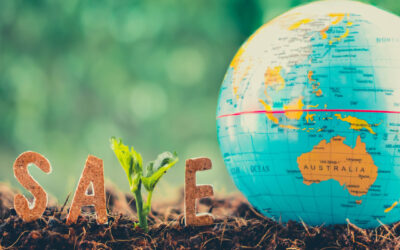You know those little numbers inside the recycling symbol on the bottom of plastic bottles and containers? Well, the other day when I read that those numbered with a 7 might contain BPA, and therefore not be suitable for my kids to use, I realized that I hadn’t a clue how to decipher the numbers. Which made me think that perhaps I should learn, and share.
Most plastics in the US are labeled with the numbers 1 through 7, in line with the code developed in 1988 by the Society of the Plastics Industry. The numbers refer to the type of polymer used to produce the plastic in question. You would think, given the use of the recycling “chasing arrows” around the numbers, that the numbers refer directly to the plastics’ use in recycling, but they don’t.
And that is what has confused matters. I wish I could tell you that it’s OK to put only certain numbers into your local blue box recycling program, or that it’s OK to put all kinds in, but the reality is that it differs from municipality to municipality. In general, it seems that a number 1 or a number 2 symbol is the lowest common denominator when it comes to recycling — most every program can handle stuff with those codes.
There’s a full list with a lot of detail here, but in general you can be pretty sure that plastic containers for soda, water, and food are recyclable, as are laundry detergent and shampoo bottles. OK, but what about everything else?
Here in San Francisco, I get the following joyous proclamation from the good folks at SF Recycling — “The days of looking for numbers contained in the recycling symbol on plastic containers are over in San Francisco!” That’s heartening. Now we can just put in everything except plastic bags and other film plastics in the blue box.
I’m afraid that you’ll have to look up your own local recycling service to find out your local rules. Don’t have one? Start one up!
When you are on the road and away from your home rules, you can be pretty sure that 1’s and 2’s are always recyclable (except bags).
And if you are vexed by the question of how clean the plastics need to be, don’t fret too much about it. They don’t have to be dishwasher clean, but it’s best if they are thoroughly rinsed. Most of them end up in applications like plastic lumber, where the blemishes and imperfections brought on by having some foreign matter in the recycling tank don’t matter so much. That said, since most recycling centers still do a lot of separation work by hand, you are doing the workers a real favor by rinsing.
I do have one remaining question. How much of what I drop into the blue box actually gets recycled? I bring it up because the Coop America web site suggests that perhaps ONLY the 1’s and 2’s do:
While the materials that are technically capable of being recycled don’t vary from place to place, … there are a range of tactics that municipalities use to maximize citizen participation in recycling. For example, some municipalities that do not recycle any plastics #3-7 nonetheless advise citizens to put all plastics #1-7 into their recycling bins, out of the belief that more people will participate if they don’t have too many complicated rules to follow. Then the MRF fishes out whatever they cannot recycle and sends it to a landfill or incinerator.
And reader Jane Martin helpfully provides the scoop on our local recycling program in San Francisco:
SF sends our #2,4 and 5 plastic to Lodi, CA to a company called Epic Plastics. They produce primarily bender board or plastic lumber.
The #1,3, 6 are being bailed and shipped to China. China is paying for the material, and they are not burning it, rather they are sorting it and melting it down into plastic pellets that are then remolded into recycled
plastic products much of which is then sold back into the United States. Many times the products are not being labeled as having recycled content.
Brought to you by terrapass.com
Featured image







